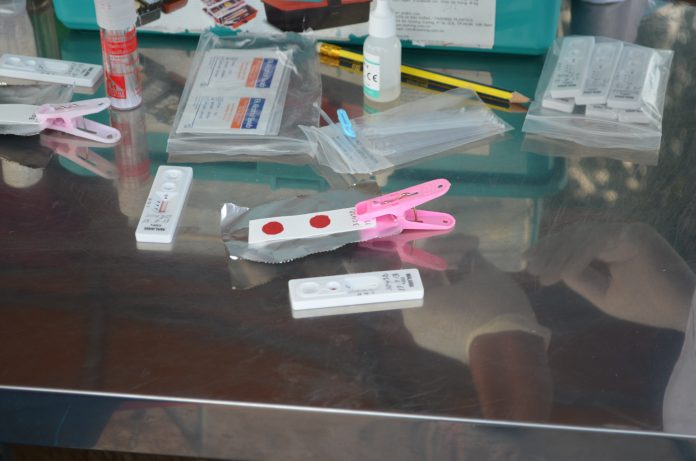Dr James Tibenderana from Malaria Consortium unveils the facts about the global goal to eliminate malaria
In the past decade, the aspiration of malaria elimination has been high on the agenda. Reducing malaria deaths and the number of diagnosed malaria cases by at least 90% and eliminating it in at least 35 countries are global targets which the World Health Organization (WHO) set out in its Global Technical Strategy (GTS) for Malaria 2016-2030. These targets cannot only be the vision among development partners, they must also be the promise we make to the populations at risk of malaria – close to half of the world’s population.
Along the continuum to malaria elimination, in certain settings reduction in malaria transmission is possible with existing tools and it is important that what has been achieved so far is maintained. Receptivity to malaria transmission in such settings should be reduced at the same pace as the number of malaria cases and deaths.
However, in other settings with very high malaria transmission, where tools are reducing malaria cases and deaths, on their own, they are unlikely to decrease receptivity and cannot, therefore, guarantee the disease’s decline. In fact, with existing products starting to show signs of decreasing effectiveness due to factors such as insecticide and drug resistance, the need for improved and new tools is critical.
Some examples of new tools are insecticides for indoor residual spraying and long-lasting insecticidal nets containing the synergist piperonyl butoxide, which heightens the effect of the insecticide, new antimalarials such as tafenoquine, the RTS,S malaria vaccine and genetically modified mosquitoes. These products take time to go through different stages of development and introduction and continued investment in research and development is fundamental to maintain a healthy flow of new tools.
The cost of new effective tools is likely to be more expensive relative to those that already exist, at least in the early stages. This could lead to a trade-off between less coverage for more effective (and expensive) tools if existing funding levels for elimination are maintained. This means that with the same level of investment the introduction of new tools will lead to a decline in their coverage. WHO estimates that for the first milestone of the GTS – a reduction of at least 40% in malaria case incidence and mortality rates globally compared to 2015 levels – $6.5 billion is required each year. Yet in 2016 the funding investment in malaria was $2.7 billion, which is less than half of what is needed.
So, will global investment in malaria elimination really double in the short term? From a pragmatic point of view, this seems unlikely if spending on health solely occurs through development assistance. Mixed models of financing which combine overseas development assistance, government spending, out-of-pocket expenditure by individuals to health care providers, health insurance and public-private partnerships present other opportunities for increased investment. In any case, the improved targeting of existing and new tools when and where they are needed most will be essential to reverse the recent upward trend in the number malaria cases outlined in the World Malaria Report 2017.
This report states that the target requiring urgent and immediate attention is ‘mortality reduction’. This is illustrated by the following contradiction: while the number of malaria rapid diagnostic tests (mRDTs) distributed by national malaria programmes (for the public sector) reduced from 312 million in 2015 to 269 million in 2016, the number of antimalarial drugs (artemisinin-based combination therapies or ACTs) increased from 311 million in 2015 to 409 million in 2016. This reminds me of when mRDTs were first introduced in Uganda and neither health workers nor patients believed a negative result, as they felt certain all fevers required malaria treatment. Health workers continued to give patients ACTs regardless until the Ministry of Health and other stakeholders were able to improve confidence in the test results.
Quality-assured case management for both uncomplicated and severe malaria through the public and private health sectors requires attention. The focus should be on improved management of febrile illness through the availability of treatment options for the common causes of fever. This will help to optimise the diagnosis and treatment of malaria. Examples of such options are community-based primary health care and facility-based primary health care with differential fever diagnosis and treatment (in secondary or tertiary level health facilities). When parasite-based diagnosis through microscopy and mRDTs is universally practised (in both public and private sectors) and of high quality, the data recorded into the routine health management information and surveillance systems will be more useful.
To this effect, having an annual World Malaria Report is essential. Data-driven decision making is even more critical at all levels of the health system. Whereas all efforts should be made to increase access to and use of all current tools, more effective targeting will be achieved if all suspected cases of malaria are tested and data on malaria are collected reliably and used for decision-making. We need to ‘Think globally, act locally’.
Dr James Tibenderana
Global Technical Director
Malaria Consortium
Tel: +44 (0)20 7549 0210
@jktibenderana
@FightingMalaria











